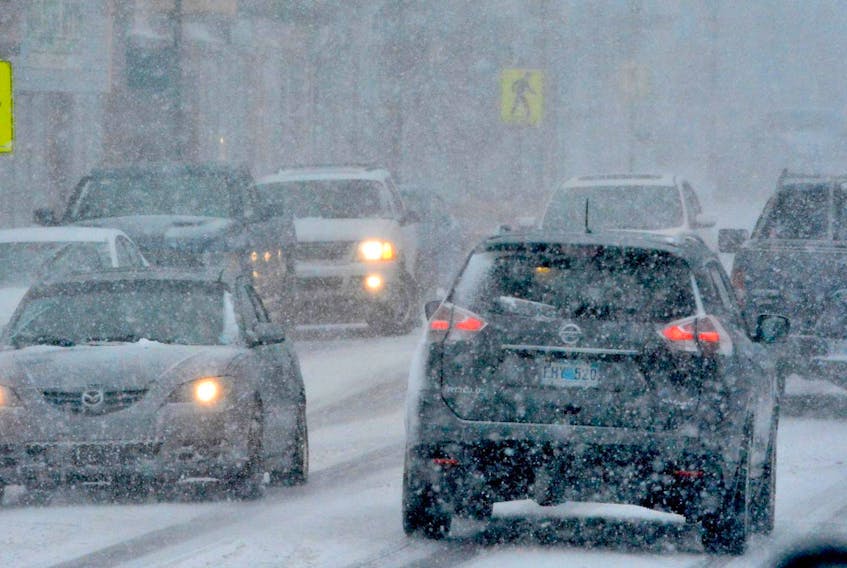The first snowfall usually results in a major traffic tie-ups as drivers cope with the new conditions for the first time in months.
For some, the first time ever! The problem is compounded as snow removal and salt crews are also often caught off guard.
Unfortunately, there are a number of crashes and collisions during this first slippery session — almost exclusively because drivers failed to recognize and/or allow for reduced grip.
Most of us can recall slipping on ice or snow. When faced with walking on such slippery surfaces, we have learned to do so gingerly. We place each foot carefully on the ground and transfer weight unto and from it to the other carefully and smoothly.
Our inner system remembers that sudden movement can result in nasty and painful results. When is the last time you saw someone attempting to run on an icy surface in leather or hard-soled footwear?
Yet many motorists will drive off on the first slippery morning completely oblivious to the fact the four “shoes” on their vehicle do not have as much grip as they did the day before.
These footprints, the only spot where the vehicle touches the road, are no different than the footwear at the end of your legs — if they are summer or badly-worn tires they are the equivalent of a leather-soled dress shoes.
If they are good-quality, all-season tires with good tread depth they might be considered as a pair of all-purpose, high-top running or walking shoes — not perfect for the job at hand, but acceptable as long as it is not too cold or the snow too deep.
If you have opted for a set of proper winter tires, you have the right “boots” on the ground. But even they do not have as much grip as they do on a warmer surface devoid of ice or snow.
Whether a human body or a vehicle, how it starts, stops and turns on a slippery surface is entirely dependent on the available grip. Another common factor is the relationship between the human brain and that grip.
Failing to recognize the signs, and act appropriately while walking, almost certainly means you are quickly, and often painfully, deposited on your butt.
Or if you are at the wheel when you fail to recognize the ambient conditions, you will likely slide into another vehicle, object or off the road.
I find it strange that an intelligent human being will step outside on a cold winter day and walk very carefully to his or her vehicle, aware of the slippery surface and attendant dangers.
Then that same intelligent mind seems to shut off and the person proceeds to drive with no allowance for that same loss of traction.
And while on the subject of decreased grip, this might be a good time to remind one and all, that having all- or four-wheel-drive may help you accelerate in slippery conditions, because it doubles the number of “feet” you have on the ground, and thus distributes your weight over twice as many contact patches.
But when it comes time to turn or stop, the extra drive wheels are of absolutely no use whatsoever. You have the same two contact patches trying to steer the vehicle and four trying to slow it as any other vehicle.
For this reason alone I can guarantee you will observe a disproportionate number of SUVs, CUVs and AWDs in the ditch or up on the divider that first slippery drive.
A friend, who is an accident reconstruction specialist, once told me that AWD often means that driver will go off the road faster and further when trying to stop on slippery surfaces.
Let’s not forget the temperature only has to change one degree, one single degree to go from wet to ice, from damp to slippery.
And that single digit applies in both Celsius and Fahrenheit. It can also result from a cloud hiding the sun.
Be aware and be safe out there.









